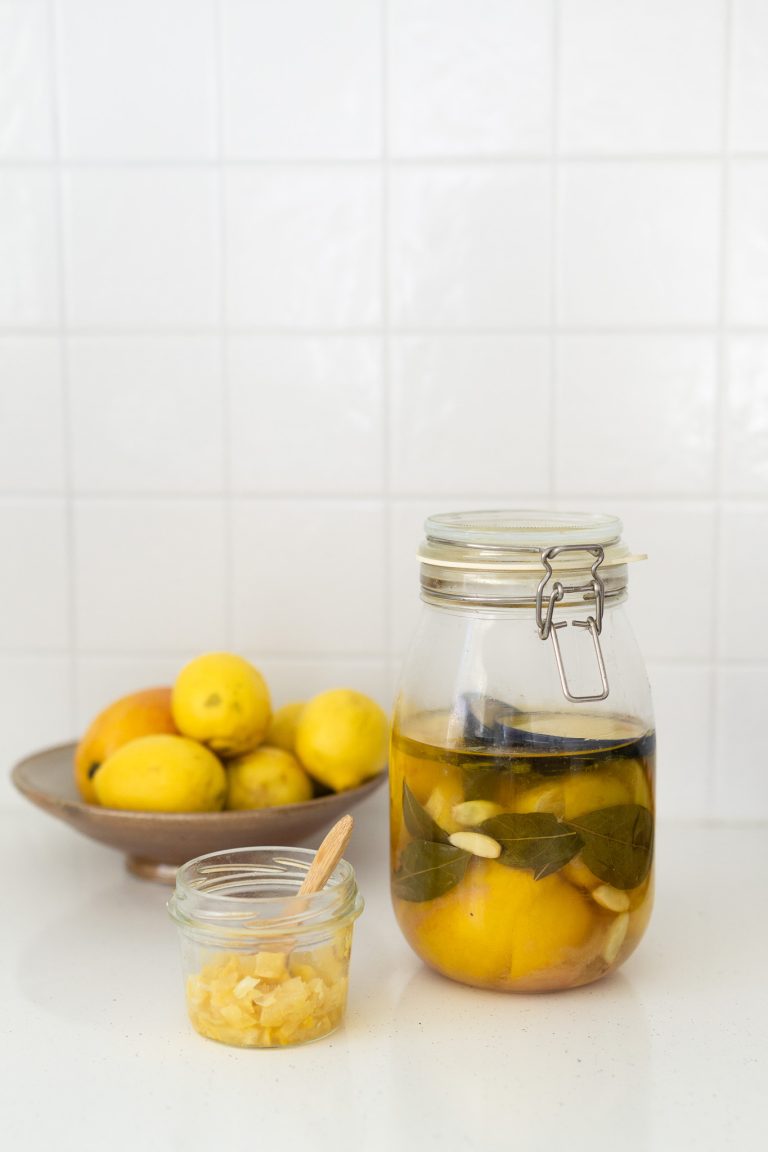Someone, somewhere once said “If life gives you lemons, preserve them…” and whether or not you believe this to be a metaphor about how sometimes things come out better than before when they’ve been given a minute to mature OR you just really care about food sovereignity and preparing for our potential impending mass extinction: Either philosophy ends in the same delicious outcome, preserved lemons. A flavour bomb in a beautifully citrusy smelling jar that will 100% revolutionise your cooking if you’ve not yet had the joy of cooking with them before and make your mouth water at the thought of them if you have.
The recipe I’m using today has been inspired by the one and only Yotam Ottolenghi hero of Mediterranean fusion inspired cuisine and host to one of the most interesting and inspiring test kitchens in the world. Whilst I know it’s not intended that way, usually when I’m making one of his recipes I have to set aside a good half a day to carry it out, this however, is one of the quickest and simplest (and most fool proof) fermentation methods I’ve come across yet.
The key, like any successful ferment however is sterilisation, so please don’t skip on that step. Outside of that however, it’s fun and almost unbelievably simple recipe to follow which I hope you enjoy making as much as you do eating!
The mystical and mouthwatering history of preserved lemons…
Preserved lemons have a long and fascinating history, believed to have originated from Morocco in North Africa, where they have been a staple in cooking for centuries. The process of preserving lemons likely began as a means of preserving the fruit for consumption during times of scarcity, but since then they have been adopted as a flavor enhancer for a whole host of dishes.
- Tagines: Preserved lemons are a classic ingredient in Moroccan tagines. Add chopped preserved lemon to lamb, chicken, or vegetable tagines during cooking to infuse the dish with tangy citrus flavor.
- Salads: Finely chop preserved lemon and add it to salads for a burst of bright, salty flavor. They pair particularly well with leafy greens, grains like quinoa or bulgur, and Mediterranean-inspired salads.
- Stews and Soups: Stir chopped preserved lemon into hearty stews and soups for added complexity and brightness. They complement rich flavors and add a zesty twist to dishes like lentil soup or chicken stew.
- Grain Dishes: Mix chopped preserved lemon into cooked grains like rice, couscous, or farro for a flavorful side dish. The citrusy tang pairs well with the nuttiness of the grains and adds interest to simple preparations.
- Roasted Vegetables: Toss roasted vegetables with chopped preserved lemon for a vibrant and flavorful side dish. The acidity of the preserved lemon cuts through the richness of roasted vegetables like carrots, cauliflower, or Brussels sprouts.
- Marinades and Dressings: Blend preserved lemon into marinades for meats, seafood, or tofu to add depth of flavor. You can also puree preserved lemon with olive oil, herbs, and garlic to make a tangy dressing for salads or grilled vegetables.
- Pasta and Grain Salads: Add chopped preserved lemon to pasta salads or grain salads for an unexpected twist. They provide a burst of flavor and elevate simple salads into something special.
- Seafood Dishes: Preserved lemon pairs particularly well with seafood. Use them to flavor grilled fish, shrimp skewers, or seafood pasta dishes for a bright and citrusy kick.
- Sauces and Dips: Blend preserved lemon into sauces and dips for added depth of flavor. They work well in creamy sauces for chicken or fish, or in Mediterranean-inspired dips like hummus or tzatziki.
- Sandwiches and Wraps: Add slices of preserved lemon to sandwiches and wraps for a burst of flavor. They complement a variety of fillings, from grilled chicken to roasted vegetables, and add a unique twist to your lunchtime fare.
With their tangy, salty flavor, preserved lemons can enhance the taste of many dishes by adding brightness and complexity to your cooking. Experiment with different recipes and discover new ways to incorporate this versatile ingredient into your meals.
If life gives you lemons, preserve them…
Anonamous
Health benefits too, well I’ll be!
There’s probably some kind of probiotic health benefits to consuming these citrusy gems, as they are being preserved as a kind of lactoferment, along the lines of saurkraut and kimchi. Also as it’s a pure feast of lemon, juice, pulp, rind and all, it’s definitely going to keep the scurvy at bay. Mostly they are consumed for a pleasurable culinary experience – but it certainly wouldn’t hurt to have them on hand in cold and flu season is all I’m saying.
Also try this if you are looking for an interesting side with a probiotic hit: Beetroot, whipped feta, kefir & rose salad
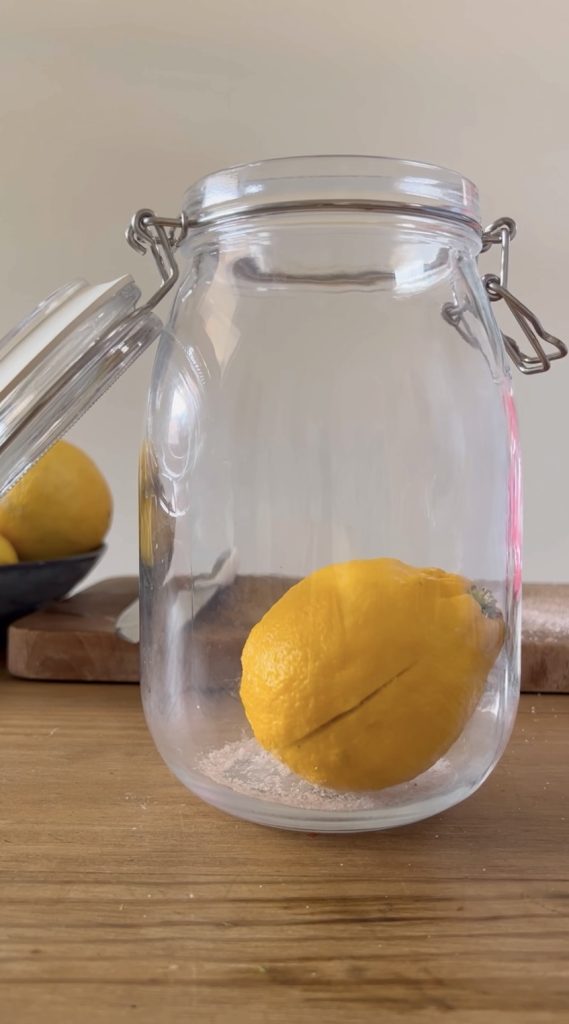
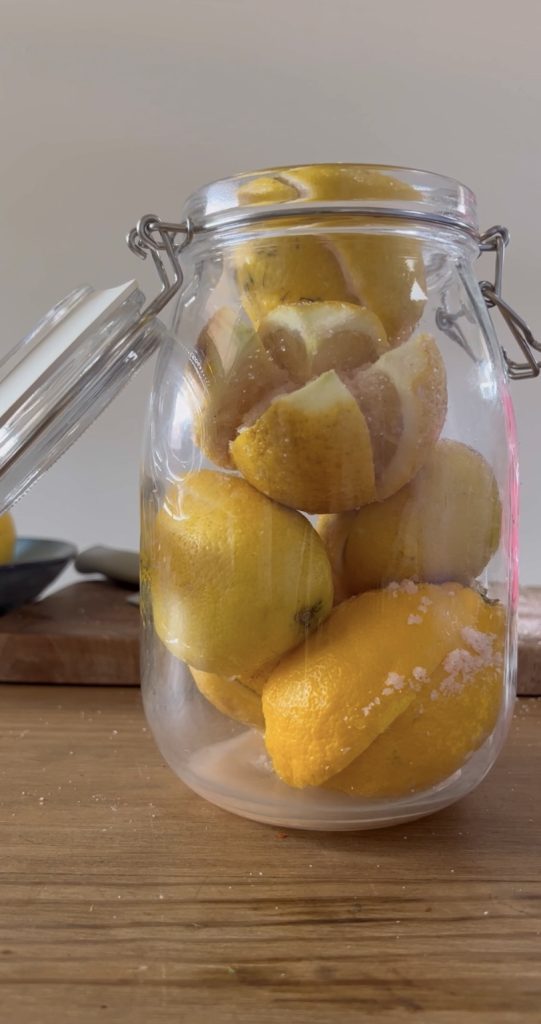
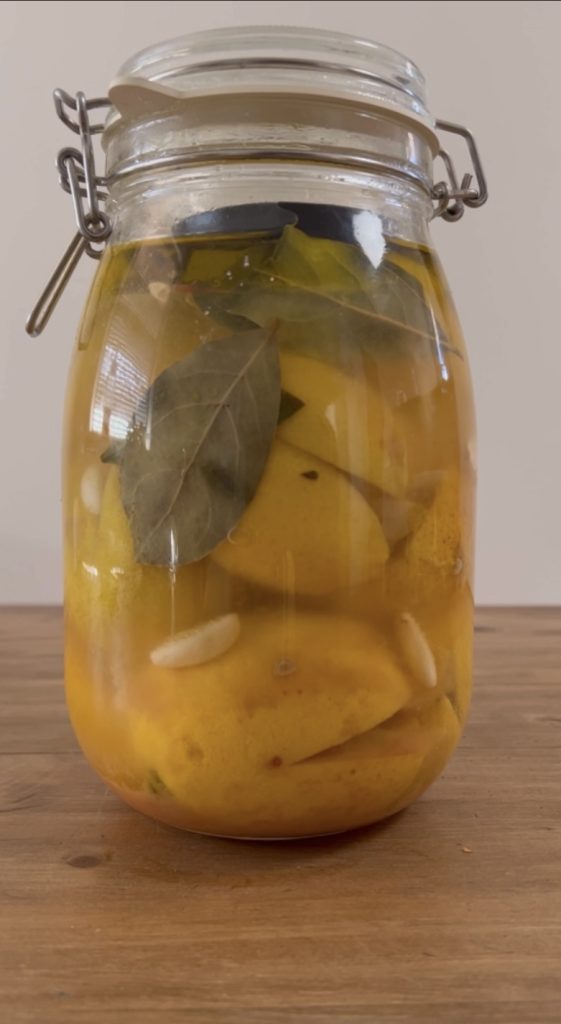
Reasons to make your own preserved lemons…
But I could just buy them at the shops, why bother?
- Customization: When you make your own preserved lemons, you have full control over the ingredients and the flavor profile. You can adjust the amount of salt, spices, and other flavorings according to your taste preferences, creating a product that is tailor-made to suit your palate. I enhance mine with bay leaves, garlic and peppercorns but you can really go to town with your aromatics here, especially if you know you might use them outside of Moroccan/ North African cuisines.
- Quality Assurance: By making preserved lemons at home, you can guarantee the quality of the ingredients used. You can make something magical from the lemons you find outside of the old nonnas house or choose organic biodynamic lemons if you wish, most importantly you also have choice over the type of salt that’s used. I like to use a good pink himalayan salt but any good quality sea salt will do… I don’t think it tastes quite the same with bog standard iodised salt but that might just be mind over matter!
- Cost-Effectiveness: Making your own preserved lemons can be more cost-effective in the long run, especially if you have access to fresh lemons at a reasonable price. You can preserve a large batch of lemons at once and store them for an extended period, saving sooo much money. Preserved lemons ain’t cheap at the local deli friends!
- Sustainability: Of course, when lemon season is here, at least in my friendship circles, there’s no shortage of them going around. This is a great way to make sure they don’t go to waste and that you have access to those incredible lemon flavours even when the season is finished.
- Culinary Adventure: Making preserved lemons from scratch can be a fun and educational culinary adventure. It inspires you to cook from different cultures and to get creative with potential uses.
- Gift-Giving: Homemade preserved lemons make thoughtful and personalized gifts for friends and family. Pack them in decorative jars and label them with a handwritten note to share your love of cooking and flavor experimentation with others. (I’d recommend directing them to a recipe or two to get them started with using them in the beginning though)
A note on ingredients:
Given this is really only a three ingredient recipe, the quality of the ingredients you choose can make a subtle but big difference to the overall results.
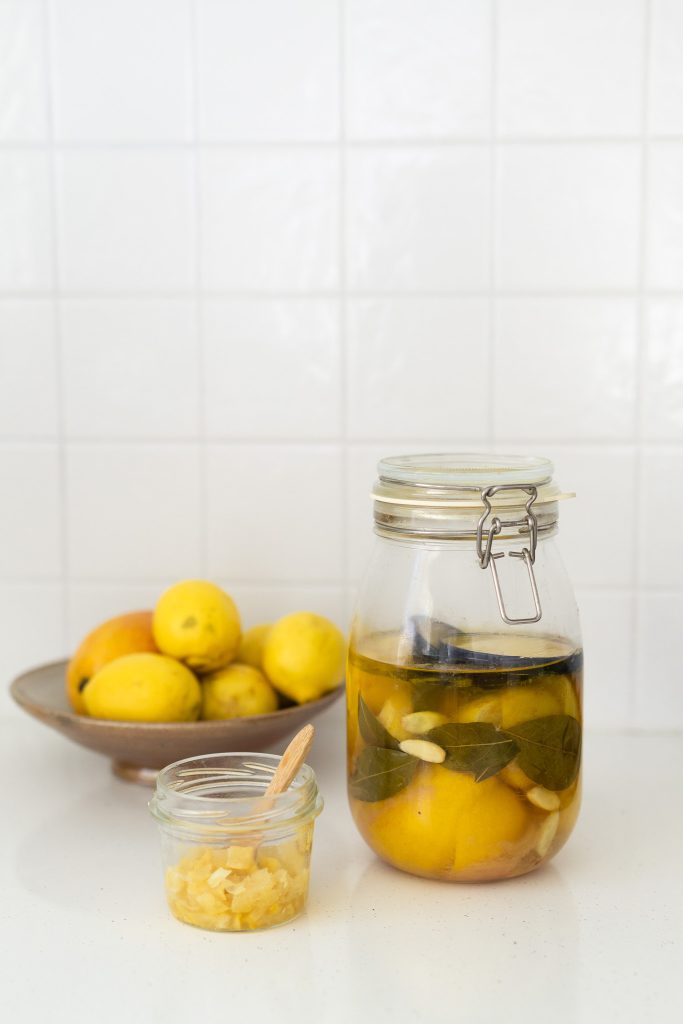
Lemons – Try to choose lemons that have a standard amout of pith to pulp ratio, nothings going to be more dissapointing than either a batch full of rind or a batch that doesn’t have enough juicy goodness – so aim for the right balance of both in your lemons.
Make sure that your lemons aren’t on the way to rotting in anyway. It’s a ferment so the species of bacteria and fungi you introduce can affect the process and the longevity of the preserve. Cut out any damaged looking parts of the lemons and discard.
Salt – Try to use a good quality sea salt or himalyan salt. I’ve always used quite a course consistency, I don’t know if it matters, but I know it worls well for me.

Easy Preserved Lemon
Equipment
- 1 1L sealable jar
- 1 knife
- 1 tablespoon
Ingredients
- 7 whole lemons
- 7 tbsp course sea salt or himalyan salt
- 7 whole lemons juiced
- 4-6 tbsp olive oil
- 6 leaves bay leaves
- 1 tbsp peppercorn
- 6 cloves garlic
Instructions
- Begin by sterilising your jar and any equipment you intend to use with boiling water.
- One by one cut your lemons in a criss cross pattern from the base to about 3/4 of the way down the lemon – enough so you can open it up.
- Place a tablespoon of salt in the inside of each lemon before pushing down into the sterilised jar. Continue this process until the jar can't fit any more lemons (about 7 for the size jar we've suggested) – Leave these lemons for at least a week to ferment.
- After a week, open the jar and push the lemons down to let out as much juice as you can. Top up until totally covered with extra lemon juice and add your garlic, bay leaves, pepper and any other herbs you'd like to flavour with. Seal this with a layer of olive oil at the top. x
- NB: It helps to use a weight of some sort to keep the lemons under the oil line. They should not be allowed to rise up into the open air as they can cause the ferment to go mouldy.
- Store for up to 6 months in the cupboard and move to the fridge after this point They are probably fine at room temperature but it will help keep your ferment fresh for longer if you refrigerate it.
Did you make this recipe?
Lovely. Now let me know how you liked it. Tag me @thetastyspoonful on Instagram or send us a message on Facebook @ The Tasty Spoonful
While I have you here, may I suggest you try these next:
Until next time. Keep following, liking, sharing, commenting and cooking, and may your every spoonful be tastier than the last!


